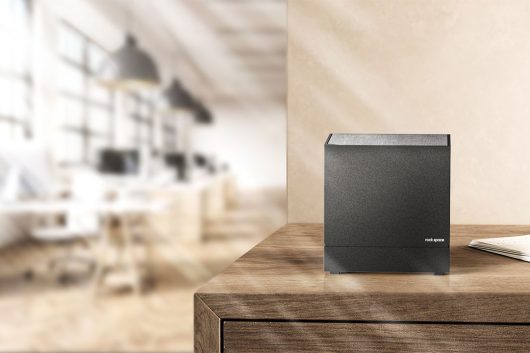


# **Reasons to Upgrade to a Mesh Wi-Fi Network in Your Home**
Wi-Fi has become a vital component of contemporary residences, allowing for uninterrupted entertainment streaming, effective video conferencing, and the automation of smart appliances. With recent improvements in Wi-Fi technology, including Wi-Fi 6 and Wi-Fi 7, wireless internet connections are swifter and more efficient than ever before.
However, if you’re facing delays during video calls or sluggish web page loading, it might be time to enhance your home Wi-Fi setup. One of the optimal choices is a **mesh Wi-Fi network**, which has become increasingly favored among homeowners for its ability to eradicate dead zones and deliver reliable internet coverage.
This guide will outline what mesh Wi-Fi entails, how it varies from conventional routers, and why you should think about installing it in your residence.
—
## **Challenges with Traditional Routers**
Conventional Wi-Fi routers have been the norm for several years. They connect to your modem, emit a Wi-Fi signal from a central point, and transmit it to your devices. Although this configuration performs adequately in small to medium-sized homes, it can falter in larger, multi-level houses.
### **Dead Zones and Connectivity Problems**
One of the primary drawbacks of traditional routers is the existence of **dead zones**—regions in your home where the Wi-Fi signal is feeble or absent. This occurs because the router’s signal diminishes as it passes through walls, floors, and various obstacles.
To enhance coverage, some homeowners experiment with solutions like:
– Positioning the router centrally.
– Utilizing external antennas.
– Raising the router above the ground.
– Minimizing physical impediments.
While these strategies can provide some assistance, they frequently do not fully address the problem. A **mesh Wi-Fi network** presents a more effective alternative.
—
## **What Constitutes a Mesh Wi-Fi Network?**
A **mesh Wi-Fi network** is comprised of several interconnected nodes that collaborate to deliver seamless Wi-Fi coverage across your home. Rather than depending on a single router, a mesh system includes a primary router linked to your modem and additional satellite nodes distributed throughout your residence. These nodes communicate with one another to maintain a robust and stable internet connection in every room.
### **How It Operates**
– The primary router connects to your modem.
– Additional nodes (or satellites) are strategically placed within your home.
– The system automatically directs your devices to the strongest signal, guaranteeing uninterrupted connectivity.
Consider it as having multiple routers working in unison to eliminate weak spots and dead zones.
—
## **Wireless vs. Wired Backhaul in Mesh Networks**
When installing a mesh Wi-Fi network, you can opt for **wireless backhaul** or **wired backhaul**.
### **Wireless Backhaul**
– Utilizes Wi-Fi signals to link the nodes.
– Simpler to set up since no cabling is necessary.
– Functions best with Wi-Fi 6E or Wi-Fi 7, which support the 6 GHz band for enhanced speeds.
### **Wired Backhaul**
– Employs Ethernet cables to connect the nodes.
– Offers a more reliable and secure connection.
– Involves more effort and expense for installation.
Your decision between wireless and wired backhaul is contingent on your home’s layout, internet requirements, and budget.
—
## **Reasons to Install a Mesh Wi-Fi Network**
Mesh Wi-Fi networks provide numerous benefits in comparison to traditional routers. Here are some compelling reasons to consider an upgrade:
### **1. Seamless Roaming**
With a mesh Wi-Fi setup, all nodes transmit the same **SSID (network name) and password**. As you navigate your home, the system automatically links you to the strongest signal without needing to switch networks manually.
Certain mesh systems also utilize **IEEE 802.11k/v/r protocols**, which enhance roaming and facilitate smooth transitions between nodes. If one node fails, the system reroutes traffic to ensure continued connectivity.
### **2. Scalability and Reliability**
Mesh Wi-Fi networks are **modular**, which means you can add extra nodes to broaden coverage. They also employ **self-healing features**, enabling them to recover from failures and adapt to changes in the network.
Advanced routing protocols like **Ad-hoc On-demand Distance Vector (AODV)** and **Dynamic Source Routing (DSR)** aid in optimizing network performance by dynamically adjusting routing paths.
### **3. Perfect for Smart Homes**
If you own several **smart home devices**—such as smart thermostats, security cameras, and voice assistants—a mesh Wi-Fi network guarantees they remain connected without interruptions. This enables you to manage your home automation system from any location.
### **4. Advanced Features**
Contemporary mesh Wi-Fi systems come equipped with state-of-the-art features to elevate your internet experience:
– **Tri-band technology** for enhanced performance.
– **Traffic prioritization** to ensure crucial devices receive optimal speeds.
– **Remote network management and control** via mobile applications.
– **Integrated security features**, such as **WPA3 encryption**, to thwart unauthorized access.
No Comments
To comment you need to be logged in!